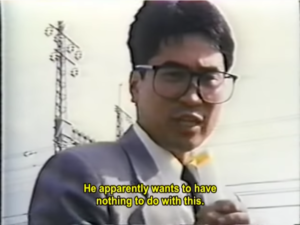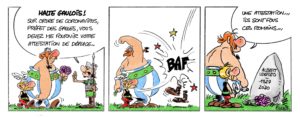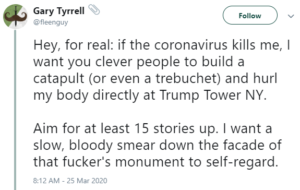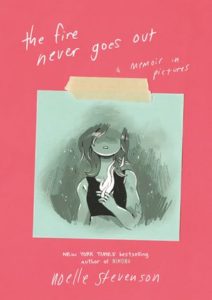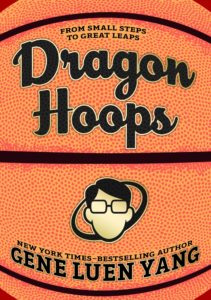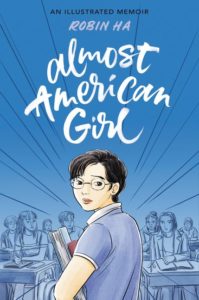
I’ve been thinking about memoir for a bit, which I’m bringing up because today’s review is of an illustrated memoir, Almost American Girl by Robin Ha. Let’s talk generally for a bit before we get to the specifics of this book.
The thing about memoirs is that they could be about anybody, but we don’t want to read (or hear … more on that in a moment) about just anybody; there are lots of anybodies that just aren’t going to be interesting, even though their personal story isn’t all that different from other anybodies that are fascinating. So what’s the distinction?
I’m thinking here about 20 years back, when my local public radio station (WNYC in New York) shifted around Saturday programming and eliminated two programs I really liked in favor of one I hated almost immediately. Satellite Sisters was pitched as five sisters who lived in different parts of the world having a conversation; it existed primarily because one of the sisters was an executive at Nike and friends with the President of WNYC, and secondarily so that they could talk to each other for an hour and not have to pay international long distance.
It wasn’t good. They sounded stilted, scripted, engineered to unnatural smoothness, and never made a compelling argument as to why, exactly, I should care about any of them. A couple of them barely said anything, even when they were supposed to be in the hosting seat. It was real-time memoir that was a failure. Although the program persisted on some public radio stations, it was removed quickly from WNYC because everybody listening hated it. I understand it’s since become a podcast because of course it has.
Now let’s move from the question Why would anybody want to listen to five sisters around the world talk about what’s happened to them this week? to Why would anybody want to listen to three brothers from West Virginia talk about … well, anything and everything, really? Because any random podcast that involves the McElroy family succeeds where Satellite Sisters failed because of what they don’t do.
My Brother, My Brother, And Me is defined by a willingness on the part of Justin, Travis, and Griffin to let themselves look like a goofball, an idiot, or even a jerk instead of trying to convince the world you’re somehow important because you’ve got their eyeballs or earholes. They talk over each other, they crack up at stupid shit, they definitely do not sound over-engineered or scripted. The Satellite Sisters were trying to declare relevance because they had a program, the Good, Good Boys became relevant because people wanted to listen to their program. The Sisters were wannabe influencers before we knew that was a thing, and the McElroys (and their dad, their wives, and their sisters in law) are people that we want to hang out with because they crack us up with the most ridiculous nonsense and they exude authenticity.
On the scale of Satellite Sisters to MBMBAM, Robin Ha is definitely a one-person McElfamily.
Okay, that’s a dangerous statement (and this is where the possible spoilers begin); what I mean by that is, even in a medium that requires multiple passes to create, with editing at each stage to refine the words and pictures, Almost American Girl is interested in telling an authentic, non-focus-grouped, un-optimally-engineered story, one that only she could tell, and inviting us along for the ride.
And the most important part of her upended life isn’t Young Robin, it’s Mom.
Robin’s mother — who isn’t even referred to by a given name until the acknowledgments, because you don’t talk about your mom by name — is many things, and Ha is willing to show them all. She’s strong willed and also insecure; meticulous and also impatient; generous and also dictatorial; willing to sacrifice everything for her daughter and also a stereotypical demanding mother. Oh, yes, and she has absolute terrible judgment in picking romantic partners, and a stubbornness that makes for a low chance of success in dealing with a 14 year old daughter who is convinced that she (the mom) has just ruined her (the daughter’s) life.
Thing is, 14 year old Robin isn’t far wrong about that. She and her single (and unmarried — still a viciously taboo situation in Korea) have a pretty good life in Korea; Robin’s got friends she loves, a routine, and she and her mom are taking on the world. But mom’s met a recently-divorced Korean man, who’s split from his wife in LA, each taking one of their teen daughters, and currently living close to his brother’s family (including their mother) in Alabama. Robin’s mom decides they’ll take a vacation to Alabama to visit, but doesn’t explain why they’re visiting this particular family.
Then she says they’re staying. She’s getting married, Robin (who doesn’t speak English) will leave behind her friends, her school, her culture (including pop culture) and start over with a stepfather and step sister and step cousins, aunt, uncle, and grandmother she’s never met. All in all, the months that Robin spends miserable and crying at her suddenly reversed life, inability to communicate, new experience of racism, and a new quasi-sister that clearly loathes her is a pretty reasonable reaction.
But, as the back cover blurb tells us, things get better thanks to a comic-making class that Robin’s mother finds. And because we live in a world of irony, as Robin’s life improves, her mom’s starts spiraling in. Her new husband isn’t a good businessman (whereas mom was pretty damn successful back in Korea). He heads to LA to try to launch a deli business, and the in-laws pressure mom to join him. Although she and Robin are just starting to acclimate to Alabama, he’s insisting they relocate, and the cultural norms re: families and who’s in charge butt heads with a very independent woman. And for the second time in a year, Robin finds herself moving to someplace new.
Thing is, this one turns out pretty okay. They land in northern Virginia, where the families of embassy staff live; Robin gets into an ESL class for the first time since arriving in America. There are other Koreans here! And comics! She enters high school and makes friends and finds a place of balance. We knew it was going to be okay because the back cover said so, but Ha’s got the skills to make a story that could happen to anybody into one that isn’t about just anybody, particularly because of one last twist that makes it into the book.
Having finally found a path to assimilation in her new country and culture (this is where most memoirs would end), Ha tacks on a trip back to Korea seven years later, as a college student. Her high school friends are with her, they meet up with the friends she left behind, and it’s the World Cup on top of everything else.
But.
Coming back to Korea after so long away, she’s looking at the culture with a fresh set of eyes. The casual sexism and expectations of women to serve male friends and relatives, the omnipresent plastic surgery, the toxicity of certain norms all hit in ways that her middle school friends and high school friends who have been back and forth aren’t noticing. She’s even re-evaluating the bullshit experiences she and her mother suffered in her childhood, and realizing that when her mother blithely declared that America was a better place for her to grow up than Korea, there may have been reasons for that. That introspection at the end, finding a balance between her mother’s flaws and her mother’s wisdom, and wrapping it all up in a personal Hero’s Journey return to home but finding it changed? That’s a damn good story.
More importantly, finding a way to honestly portray how your mom ruined your life, but maybe didn’t, but kinda definitely did maybe, while getting your very proud, very stubborn mother to (eventually) engage and participate and agree Yeah, that’s what happened? That’s a damned good storyteller, and that’s what makes memoir work.
Almost American Girl by Robin Ha released at the end of January. It’s available wherever books are sold, and will make an excellent addition to your coronavirus isolation reading list. Enjoy while reflecting on how Korea is putting the rest of the world — the US in particular — to shame with its handling of the pandemic.
Spam of the day:
Here’s a handy video that explains how to boost your immune system so you can protect yourself from the coronavirus
Okay, you sent this on 6 March, before the panademic really started to hammer us, but still: Fuck all the way off, then fuck off some more, you ghoul.
